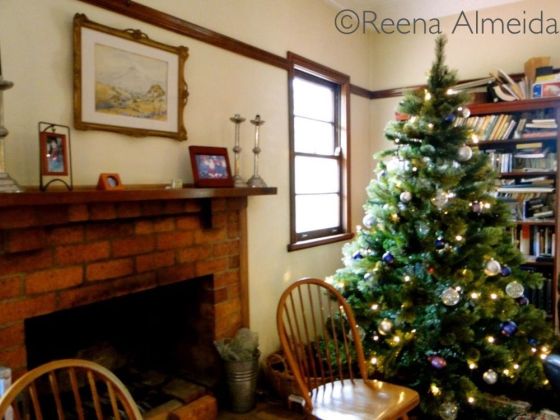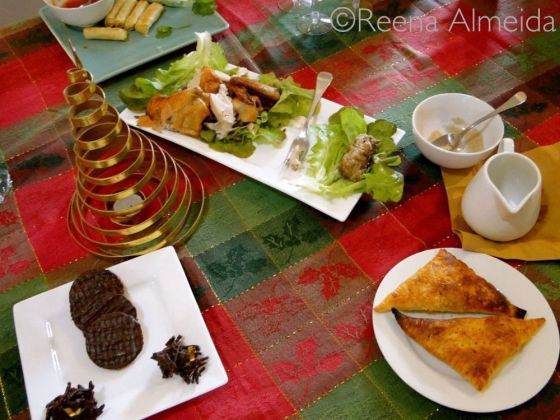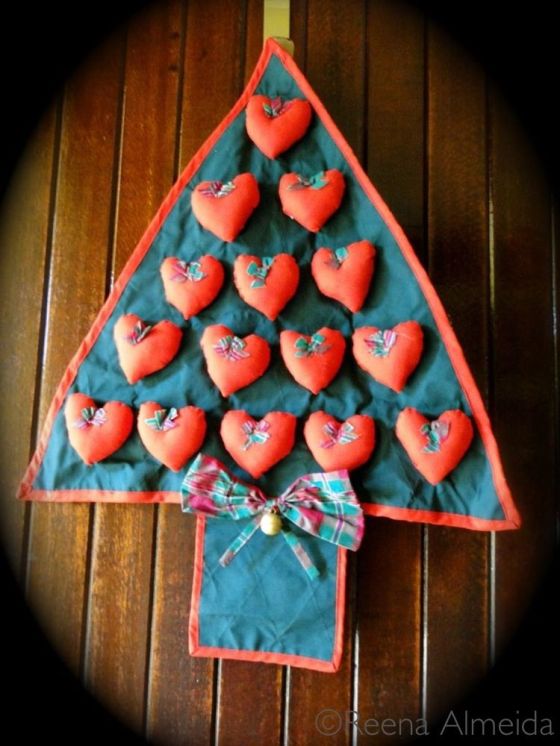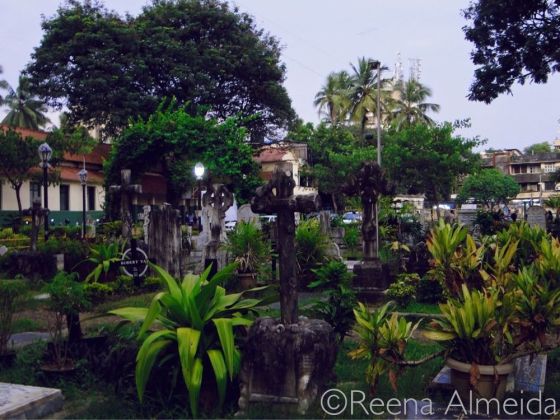For as long as I can remember, cooking marzipan has always been a woman thing. When Nana was alive and mobile, she would gather my sister and me around the dining table and make us help her and our mum out with the Christmas sweets. Kal-Kals had to be curled up a particular way, stuffing for the nevris had to have the right ratio of ingredients and stirring the cashew paste for marzipan was a shared activity.
A platter of traditional East Indian Christmas sweetmeats is a wonderful sight. Kal-Kals, Nevries, Dahl sweet, Coconut burfis, Coconut canapés, date pudding/cake, Jejubs, Fruit cake, Milk cream, Marzipan, Date rolls, Butterfly wafers, etc. are just a few that find their way into houses and bellies at Christmas-time. Back then, Christmas was when the women of the family came together and shared cooking tips with the younger girls. Us young ‘uns for that matter, loved being around vessels that had to be licked clean, so it was a great deal everything said and done.
Which is why when I made marzipan yesterday, I couldn’t help but feel a bit teary over how odd it felt to be making it by myself. It was the first time for me but surprisingly, it turned out quite delicious in the end.
Most cultures make home-made marzipan using almonds, but a small chunk like us East Indians make it using cashew nuts. Even if both are primarily dried fruits, there is a vast difference in taste. Marzipan made of cashews is far richer and involves lesser ingredients than marzipan made out of almonds.

I’m not very sure about the cooking process though. Considering the amount of patience and energy required to make marzipan the East Indian way, I wouldn’t be surprised if the other type involves an equal amount.
When I set out to make marzipan here in my Australian home, I had a major problem. No molds and no Crawford Market or Vasai Bazaar at hand to procure them. Trusty rubber molds with assorted shapes like sea-shells, fruits, flowers and geometric ones are a staple in every Christian house-hold in Bombay and are available in stores in areas with a strong Christian presence. They are not very expensive either.
I expected to find similar cooking accessories out here, but no go. You would think in a country filled with Master Chef fangirls and women who seem to be aces at nearly everything they cook, you would at least find a decent marzipan mold. Sigh.
All I came across were some wacky Christmassy ice trays and jelly molds in David Jones and the local supermarket. The sales ladies advised me that the consistency of marzipan may not be suitable for the molds they had available. However, if you are of a mind to order some gorgeous molds online, then head to Baking Pleasures and if you happen to be in Mumbai, do make a trip to Crawford Market.
No molds and my own two hands resulted in me falling on the backup plan – creating whimsy marzipan shapes! Believe you me, this is as fun as mucking about with Play-Doh.
The internet is the frantic cook’s emergency kitchen and I found some terrific inspiration lurking in the most unlikeliest places. Take for instance, the eight-year-old genius who taught me how to make calla lilies and roses from marzipan and some more floral inspiration from a girl who seemed to have a lot of patience with edible flowers.
Cake Journal was another brilliant place where I came across a delicious recipe for marzipan bombs / balls (à la rum balls) and a handy tute on crafting wee little roses. Nonetheless, these paled in front of the stupendous recreation of Hagrid’s hut complete with a Hippogryph that I stumbled across on Gingerbread House Heaven! Inspiration for marzipan begins and ends there, I say!
Being a novice at marzipan makes you realign your designs and ambitions though and so I started with button-faced snowmen, some curiously warm snowmen and a few portly penguins. I gave a miss to the traditional marzipan sea-shells East Indians are notorious for making as well as the tried and boring marzipan fruits and flora. Cakeology had some scrumptious-looking marzipan cakes, but I have bookmarked them for future dexterity with marzipan. Mr. Hanky Poo too has been quietly bookmarked for a potential prank *wink*.
East Indian marzipan is a bit tricky to make. This will be surprising to some people, especially if I mention that all I used to make marzipan were ground cashews, rose-water, egg whites and sugar.
The hard bits are:
Making sure the cashews are ground not too coarse and not too fine. Apparently, the finer you grind them, the more oil they secrete.
Ensuring your stirring arm and back are up to the hour-long stirring session. Or simply have a mischievous elf or two around to share the burden.
Ensuring you have the consistency of the cooked dough just right.
Having nerves of steel when it’s time to knead the scalding hot dough. A colourful vocabulary has been known to alleviate the pain involved in this step as well.
Working on my own, I began with the preparation process at 2:00 pm and completed the shapes at 8:30 pm. However, I had a lot of marzipan (I used 500 gms of cashews – 150-200 gms is generally enough) to play around with, so the entire deal depends on how much you plan on making and how many people you have at hand to help you.
Trust me, it’s fun and infinitely better if you have company. However, classic Christmas carols and a fertile mind have been known to take people to experimental marzipan heaven as well.
At the end of my marzipan-making session, I had:
A monumental ache in my back.
An army of utterly bewitching penguins and snowmen.
A very, very dashing gendarme.
A grin as wide as Giriz talav.
Two very thrilled and happy men.
Extremely proud parents.
Hearty adulation from my peers.
S.A.T.I.S.F.A.C.T.I.O.N.
Oh yeah, marzipan sessions are fun alright. Ping me if you need the recipe. I charge photographs of your result and an exciting account of all the fun YOU have making ’em!
P.S: You can find the recipe for the Marzipan I made on my food blog, Fritters & Foogyas.














